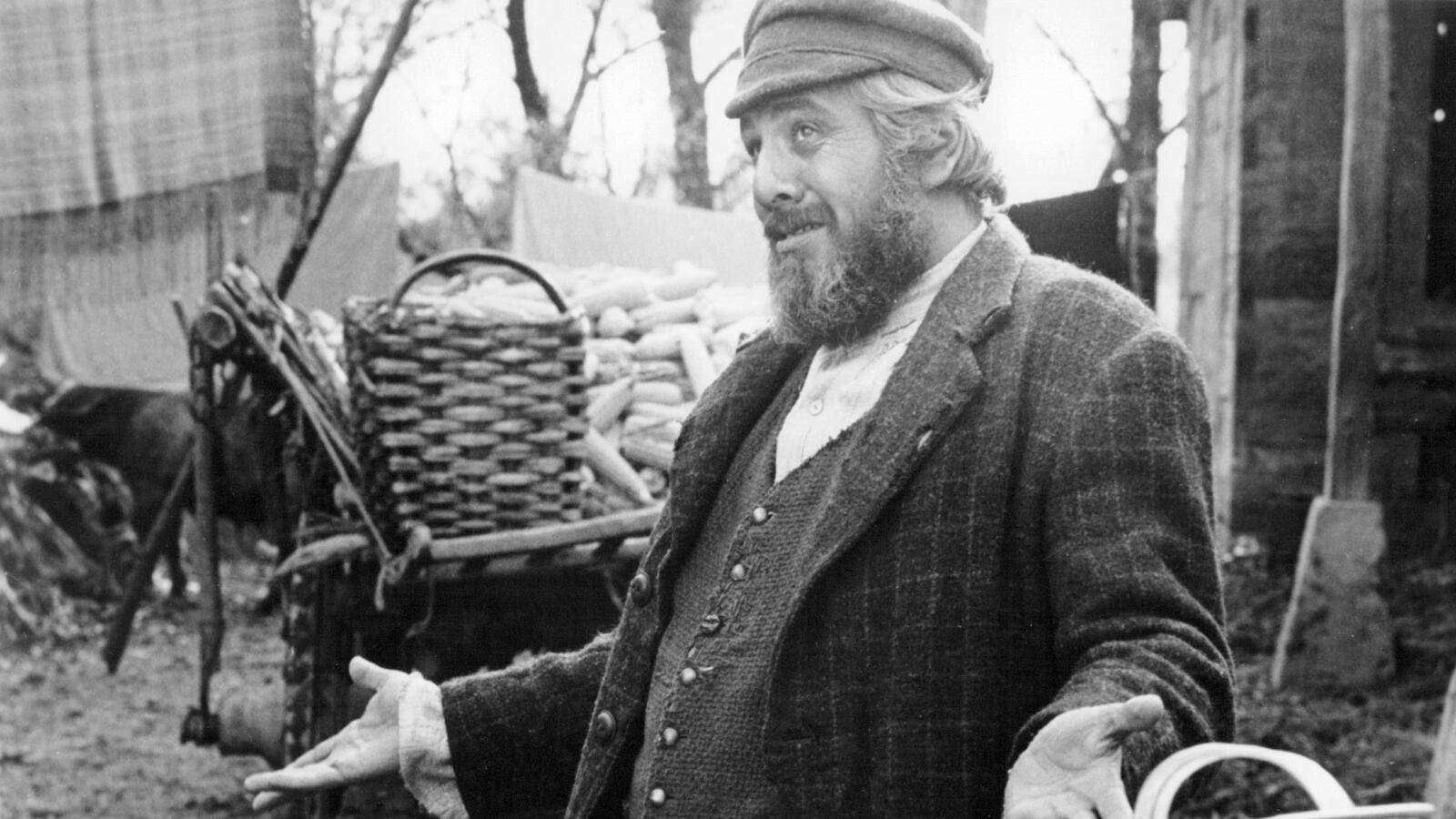It is extraordinary, not the norm, if a work of art can change how people look at each other. In this way, Fiddler on the Roof, the enduring musical about a Jewish milkman in Tsarist Russia confronting modernity and holding onto tradition, has done an extraordinary thing: it has brought the shtetl in a commercial, friendly way to several generations of Americans and global audiences. The story of Tevye the dairyman has gone through several phases, first as a collection of short stories written for a generation of Russian Jews who shunned the commoner language of Yiddish, and finally one of the top five musicals performed by American high-schoolers of any religious demographic. With an eye for cultural history and loads of research behind her, Alisa Solomon makes the case that over several generations of adaptations for film, television, and the stage as one of the longest-running Broadway productions of all time, Fiddler has played an inextricable part in the evolution of Jewish imagery in the 20th century. Wonder of Wonders: A Cultural History of Fiddler on the Roof takes the reader from Yiddish writer Sholem Aleichem’s literary struggles with authenticity and language in the 1880s, to America’s tension over Jewish assimilation in the 1950s and ‘60s, to Russia’s reclamations of Jewish tradition in the 2000s.

Solomon begins her history aptly with the original author of the Tevye stories: Sholem Rabinovich, who took on a pseudonym when he decided to write in Yiddish (then a language seen as illegitimate by the Russian Jewish intellectual elite). From the beginning of the life of Tevye, then, there was a struggle between how Jewish writers wanted their people to be perceived and how they actually were. Rabinovich felt strongly that the shtetl that he grew up with should be the center of his stories, and the characters should be as natural and authentic as possible. They should speak as they spoke—that is, in Yiddish, not in Hebrew. Still, there was a definite stigma against such a choice, and Rabinovich chose to write under a new name, Sholem Aleichem, which means literally “peace be with you” and is colloquially used as a greeting along the lines of “hello, how are you.”
Aleichem became one of the most popular Jewish authors of the time, hailed as the Jewish Mark Twain. (Mark Twain, upon hearing of Aleichem’s reputation, quipped that he was actually the Jewish Sholem Aleichem.) The stories of Tevye, his daughters, and his constantly considered faith were heralded worldwide, not just in Russia, for their naturalness and their effective combination of lightness and tragedy. Aleichem’s status as a Yiddish literary superstar made him an attractive choice for the Yiddish stage in New York, but he could never pull off the transition from short stories to drama. His adaptations of his own work fell flat throughout the beginning of the 20th century, and a convergence of events (among them a recession in 1913 and the first World War’s effect on Russian industry) hit the theaters and the publishing industry hard enough that his one attempt at putting Tevye in a play never came to fruition.
Three years after Aleichem’s death in 1916, Maurice Schwartz, a Yiddish theatrical mainstay, put on a modified version of the Tevye script, and this began several decades of adaptation of the stories, not just for the theater but also for film, television, and radio. Rodgers and Hammerstein optioned the first major volume of the Tevye stories in 1949, but they let the option go in favor of working on The King and I. It would be Jerome Robbins, a prolific director, producer, and choreographer with familial ties to the shtetl who would push the play into the form we know it in today. After his success with West Side Story, Robbins was an obvious pick to direct the latest incarnation of the Tevye tales: a musical written by Jerry Bock, Joseph Stein, and Sheldon Harnick, all of whom had been cautioned against staging a musical with that much commercial risk. It opened on Broadway in 1964 to rave reviews, was nominated for 10 Tony Awards, and held the record for the longest-running Broadway musical for almost 10 years.
Ultimately, Fiddler on the Roof—its creation, its success, its narrative, its themes—is about identity and assimilation, religion and comedy, history and family, all at odds and all intense. Solomon establishes a complicated conflict: much like Sholem Aleichem before them, no one involved with the characters of Fiddler and its source material wanted Jews to be seen the wrong way. But how to define that “wrong” way was contested throughout the 20th century, as Jewish Americans reckoned with their ancestry and their status as a minority. Identity and image became tense subjects in the rewrite process once Jerome Robbins was brought on. Solomon recounts a recurring Socratic dialogue between Robbins and Stein, Bock, and Harnick. Robbins would ask them repeatedly what this story was about. Bock, Harnick, and Stein could not do better than offering a rudimentary synopsis: “The show is about a dairyman and his marriageable daughters.” One day, Robbins gave up hope for a new answer, and he ranted in frustration. “That’s not enough,” he said. “That’s ‘The Previous Adventures of the Goldbergs.’”
If you don’t get this reference, Solomon’s talent for explanation will come to your rescue. A theater critic and staff writer at The Village Voice until 2004, and now a journalism professor at Columbia University, she can certainly do her dramaturgical research. Molly Goldberg was a radio and TV character synonymous with a meddlesome sort of Jewish mother for generations of Americans. Solomon writes, not without distaste: “Life magazine likened the program to ‘a pair of comfortable old shoes which never seem to wear out.’” To be seen as too eager for acceptance, too easy to digest, would have been defeat for Robbins, who loathed the stereotype of Jews as “lovable schnooks,” and for Bock, Harnick, and Stein, too, who understood the draw of the Tevye stories enough to want to adapt them in the first place. Almost all involved with the creation of Fiddler on the Roof had familial ties to the world Sholem Aleichem described. Stein’s father, a Polish immigrant, had read the stories to him when he was young in the original Yiddish; Robbins’s family were from a shtetl much like the one in Fiddler that was destroyed in World War II; and Bock’s grandmother sang Russian and Yiddish folk songs that gave him what he referred to as “his ethnic juices.” Harnick initially wrote off the work of Sholem Aleichem as nothing special, but came to find them “wonderfully human and moving and funny.” The sense among all of them was that these stories were beautiful and buried; they wanted to show them to the world.
Wonder of Wonders approaches the topic of assimilation from many angles. In most ways, the creators of the musical did not want to water down the Tevye they knew and loved. These stories were about characters who were Jewish, rather than Jewish characters; their faith was a central part of their story without overwhelming it. If reception to the play and to its subsequent 1971 film adaptation are any measurement, the artists had some success in this endeavor to resist a certain type of assimilation. Instead of alienating their audience, they had critics drawing comparisons to secular heroes of literature. Pauline Kael would later call Tevye “a male Mother Courage, not a male Molly Goldberg” in a warm appreciation of the 1971 film adaptation. Robbins and his writers had escaped the Life magazine image of comfortable old shoes.

Solomon points out that the “comfortable old shoes” idea was already going out of vogue in America by 1964 anyway. Just several years before, Leon Uris wrote the popular novel Exodus, about the founding of the state of Israel, and Otto Preminger adapted it for the screen with blue-eyed, mainstream Paul Newman as the star. Newman intones dramatically at one point, “People are different. They have a right to be different. They like to be different. It’s no good pretending the differences don’t exist.” The left-wing magazine Jewish Currents, affiliated with the Communist Party up until 1956, raved about this portrayal. These were “Jews who fight, who live, and who triumph.” This was in keeping with the postwar rehabilitation of Jewish self-perception. Instead of a people battered by the cultures they sought to participate in, these new generations were dynamic and strong. Tevye is not just a poor man under the boot heel of modernity; he wonders why he is poor, and he is a religious man who questions his faith. He keeps a Talmudic tradition alive. He was, Solomon argues, such a success because he was the type of Jewish patriarch men and women wanted to see.
Throughout the history of Fiddler on the Roof, writers and actors have come up against a huge problem: do we sacrifice Jewish traditions and authenticity for a chance to amp up show business aesthetics and speak to everyone? This is the issue of assimilation writ in flashing neon lights. Broadway, after all, is built on escapist tours of human emotion, and Sholem Aleichem’s work was far more confrontational than romances or adventures. It’s remarkable that Robbins, Bock, Harnick, and Stein managed to combine the sentimentality of the genre of musical theater with the starkly unsentimental subject matter: cultures that are going extinct, people who are struggling to hold onto one another. They did so by removing the real darkness at the heart of the Tevye stories and focusing instead on the lightness and the triumph of the characters. As Solomon says, “myth building makes quick riddance of inconvenient facts,” and the same could be said of dramatization. In both the play and the film, the latter of which carrying a sweeping, epic tone, the character of Tevye is affable, even kind. There was a broadness to the physicality of Zero Mostel, who starred in the 1964 production, and there was a twinkle in the eye of Chaim Topol, who played Tevye in the 1971 film. But in the stories themselves, there is another, more misanthropic side to the character. In one tale, Tevye grumbles to himself that he isn’t worried about God. He will continue to confront a higher authority, no matter what, but “what bother[s] me is people.” It is a mirthless humor, as Solomon says. It’s easy to see why a group of Jewish artists would cut out this problematic piece of the character, no matter how truthful or authentic.
On the other hand, though the imagination has few boundaries, for something to be truly appealing it must have grounding in our shared history. It is clear that, from reading Wonder of Wonders, the spirit of Fiddler on the Roof is far more socially authentic than what you might assume from a crowd-pleasing musical. This is entirely due to a collective duty felt among those who decided to interpret Sholem Aleichem’s stories. They felt they must retain the source’s naturalness, and they must honor the inquisitive nature of their protagonist, Tevye. They must remain, above all, faithful to tradition.






